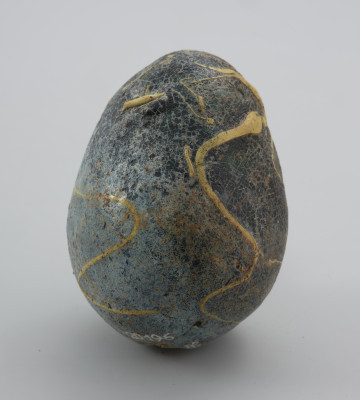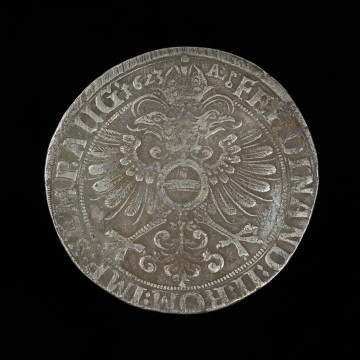Cover for tallit
ante 1939
Museum of the history of Polish Jews
Tallit covers (pronunciation popular among Ashkenazi Jews, from Hebrew talit). The tallit is a quadrangular prayer shawl, the most important part of which are the so-called tzitzit, i.e., fringes tied to the four corners of the tallit, without which it would lose its significance. The tzitzit serve as a reminder of the commandments given to Jews by God. The tallit is worn during morning prayer (shacharit), during which the head is covered with a piece of it, which symbolises being under the protection of the Torah and surrendering to God's will.
The custom of wearing a tallit derives from the biblical commandment:
"Let them make for themselves tassels at the edges of their garments ... when you look at them, you will remember all the commandments of the Lord, to fulfil them" (Num 15:38-39).
This custom, apart from its practical value (the prayer shawl fitted better on the shoulders), probably also had a spiritual value, the meaning of which can be found in biblical metaphors:
"He will put a thankful wreath on your head; he will bestow on you an honourable crown." (Proverbs 4:9);
"In that day the Lord of hosts will be a crown of glory and an ornamental diadem for the rest of his people." (Is 28:5);
"You shall be a beautiful crown in the hands of the Lord, a royal diadem in the hand of your God." (Is 62:3).
It must be remembered, however, that in ancient times the wearing of a costume was common in men's fashion. For Jews, the religious significance to their attire was added by the tzitzit at the end of the shawl. It was not until Diaspora times that the tallit became a permanent part of religious dress. Confirmation of the importance and significance of the tallit for Jews can be found in the novel "Josie Kałb" by Israel J. Singer (Warsaw 1934, p. 148): "Jews who have come from afar to the fair ask the local residents for tallit and tefillim for worship (...). Know for the future (...) that a Jew is not allowed to travel without a tallit and tefillim (...). It is worth knowing that the symbolism of the colours of tallit is inspired by the pattern of the flag of the State of Israel.
Nowadays, many communities of progressive Judaism allow women to wear the tallit, but most Orthodox scholars do not support this practice. We encourage you to read a short history of Jewish clothing in the context of religious principles on the Virtual Shtetl website: (https://sztetl.org.pl/pl/slownik/stroj-zydowski, accessed 06.09.2021).
Natalia Różańska
Znaleziono 1 obiektów

1930 — 1939
National Museum in Szczecin

National Museum in Szczecin

1623
National Museum in Szczecin
DISCOVER this TOPIC
National Museum in Lublin
DISCOVER this PATH
Educational path